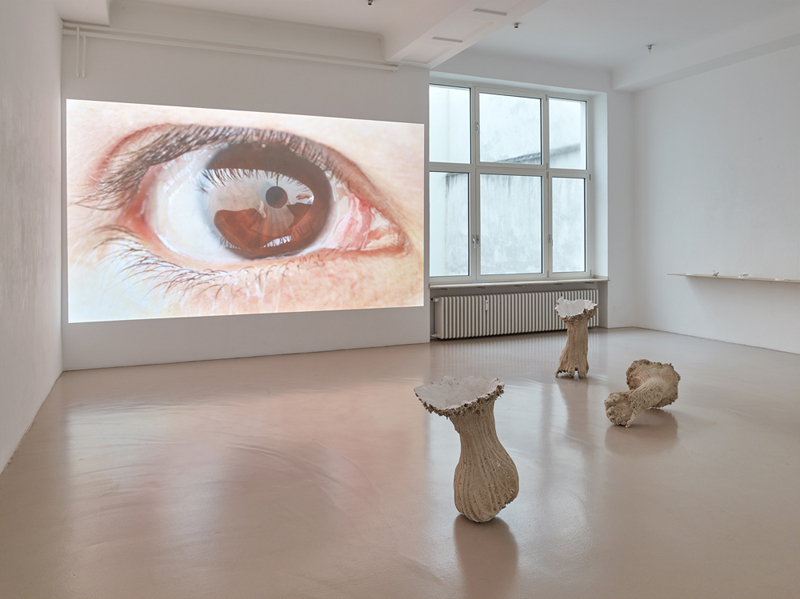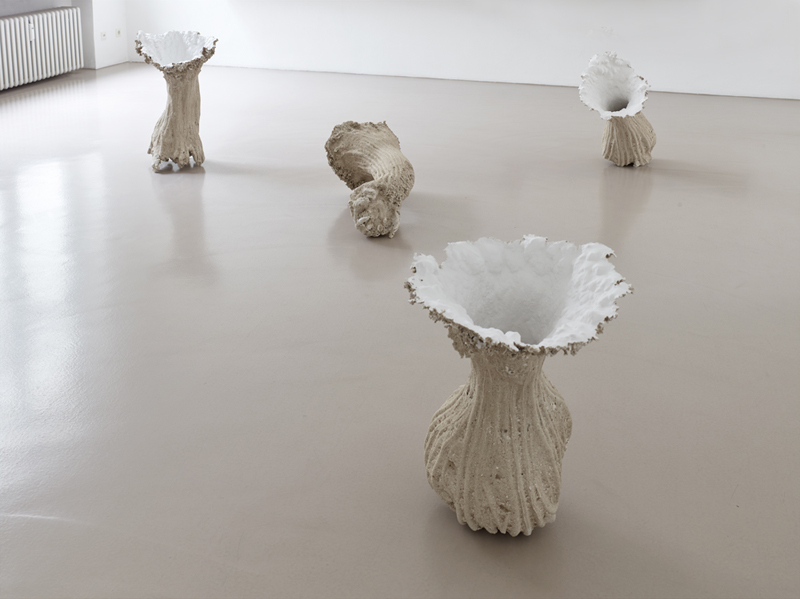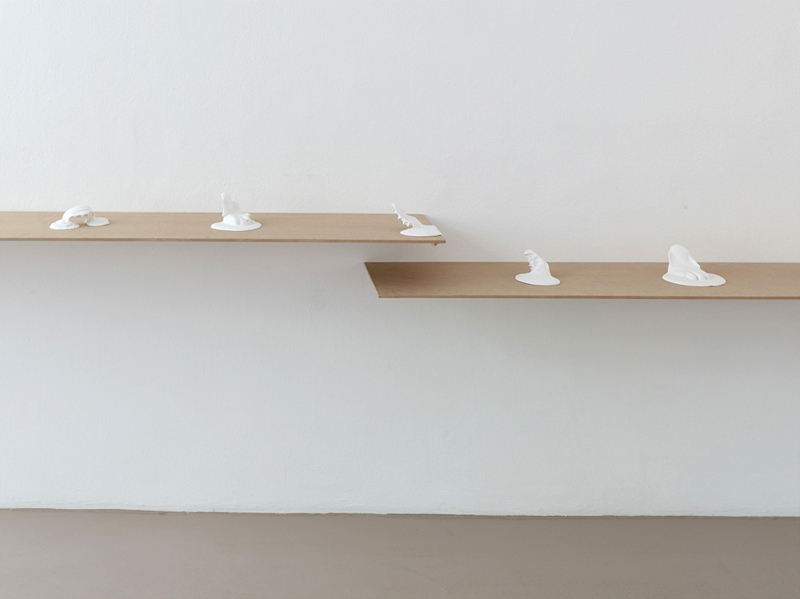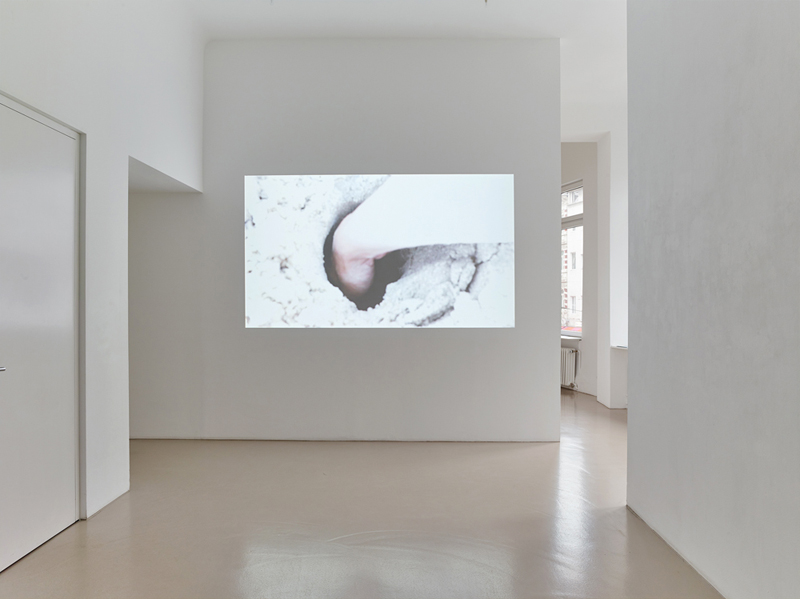Relics
Solo-exhibition Thomas Rehbein Gallery, Cologne/ 2017

In Pauline M’barek’s works the human body appears as an instrument of inquiry. It is a medium to gain access to the world, allowing to acquire fundamental experience by means of sensory impressions that also serve to establish contact to the environment. Through the senses, human beings experience and engage actively with their surroundings, “grasping” them with hands and mind. The body is an integral component of the self, while at the same time it provides access to the outer world. As a border between self and other the body appears both permeable and compact, open and closed. Simultaneously subject and object, it bears and leaves traces of interaction. M’barek deals with processes of perception, which she detects and converts into an image or a concrete material form. Thus M’barek is also concerned with the exposure of traces of subjective moments of perception. “The exhibition Relikte centers around the investigation of sensory procedures through the body, which is undertaken by means of archaeological methods such as digging, retrieving and casting: How can sensory perceptions be materialized?“ (M’barek)

In her group of works RELIKTE M’barek transforms such traces that are left by the body while digging a hole into the ground and consequently turns invisible sensations into plastic shape. The resulting objects are witnesses of a movement of hands, entering the sand and moving forwards until reaching a certain depth. Hollow spaces that emerged due to the blind, subterranean searching movements are cast in countless layers of plaster, and recovered as a positive form: “The cast of the digging hand thus becomes a relic, the hole turns into a container and the negative impression changes into positive shape.” (M’barek) The resulting pieces, emerging from the conversion of action into artifact, manifest themselves as highly aesthetic, vessel-like forms, whose coarse-grained surface is interspersed with particles of shells, recalling antique, encrusted underwater treasures.


The single sculptural objects of which CONTENANCE (French: load capacity) is composed, are presented similar to archaeological finds. Amorphous downpours of plaster seem to be caught in an upward movement and therefore to withstand gravity. Upon closer inspection, negative impressions of hands can be recognized. As a receptacle for the viscous plaster mass, slowly flowing through the fingers onto
the floor, the hand leaves an imprint when the material solidifies. Plaster, which is commonly known as lifeless and rigid, is mainly used to produce copies from original forms. Here, it shows itself as a flexible, smooth mass. At the same time, it bears marks of human touch, making visible tactile experience.

To visualize the sense of sight is the aim of the video piece GLANCE, the focus of which is a starkly enlarged eye, being filmed while watching. The eye is represented as a tangible, bodily organ, thus captured in its sensual effect or appearance. The smooth, shiny, even moist, surface mirrors the outside surroundings, of which the body is part. Although the reflections situate the body, out of which the eyes look, in a determined setting, they are not able to unveil the process of sight itself, which takes place in the inside of the body and remains invisible on the outside.

Another video piece, EXPOSURE follows the movements of a hand, burrowing an opening into a glaring white surface, which turns out to be sand. As the hole becomes deeper and darker, hand is struck by the direct sunlight and it´s image appears overexposed, like a white negative. On the bottom of the hole, the shimmering surface of the emerging water appears and alternates with collapsing masses of sand, resulting in an almost dramatic action. The hand ultimately regains positive shape when the sea level is reached. Her physicality returns, yet as a mere reflection on the surface of the water. The image is exposed.
To Pauline M’barek the body and its perceptual system proves to be both an examination device and object of investigation. Her art is less concerned with the disclosure of a result, but rather with the specific physical manifestations that are inscribed in such processes of detection and discovery.
Text by Bettina Haiss